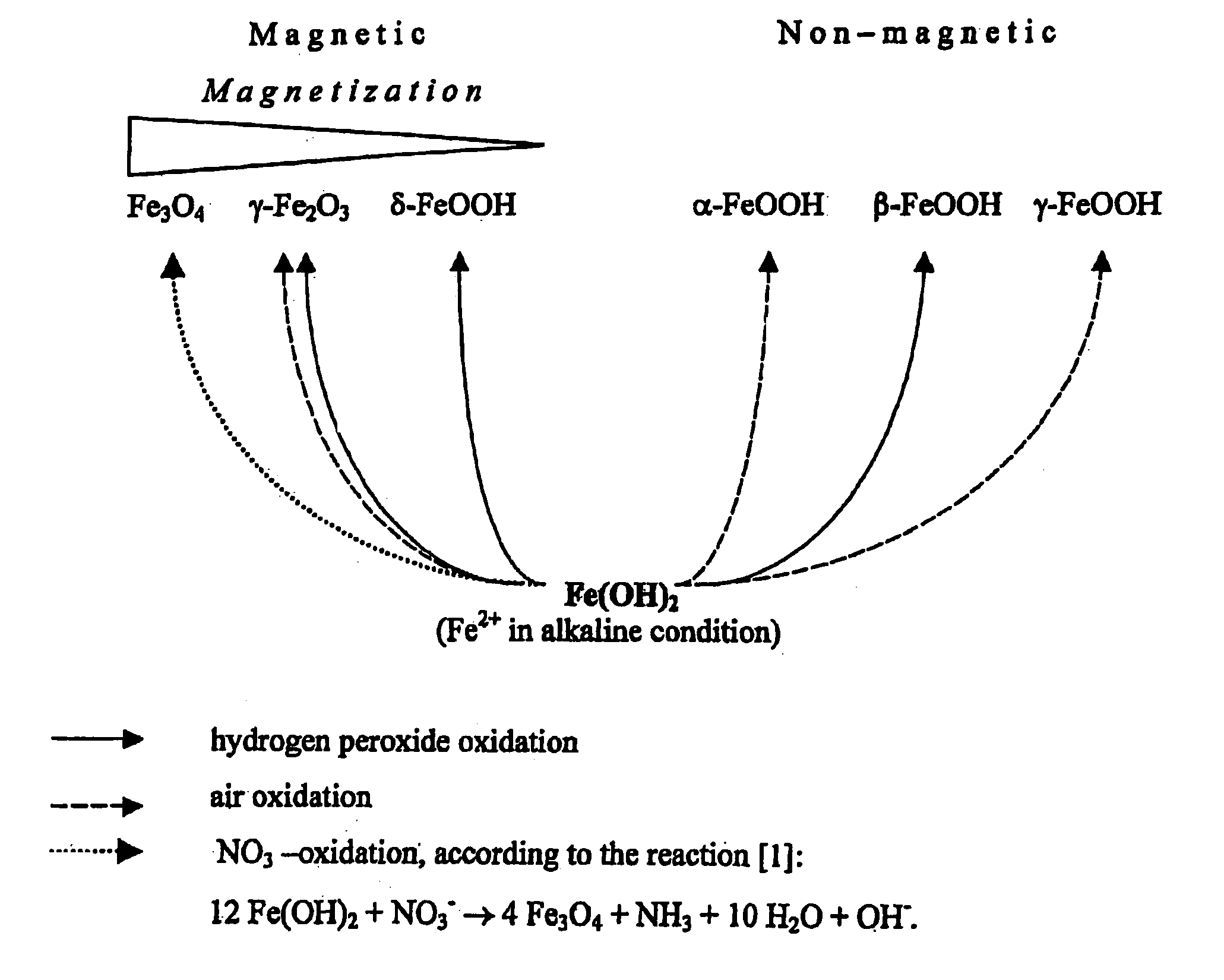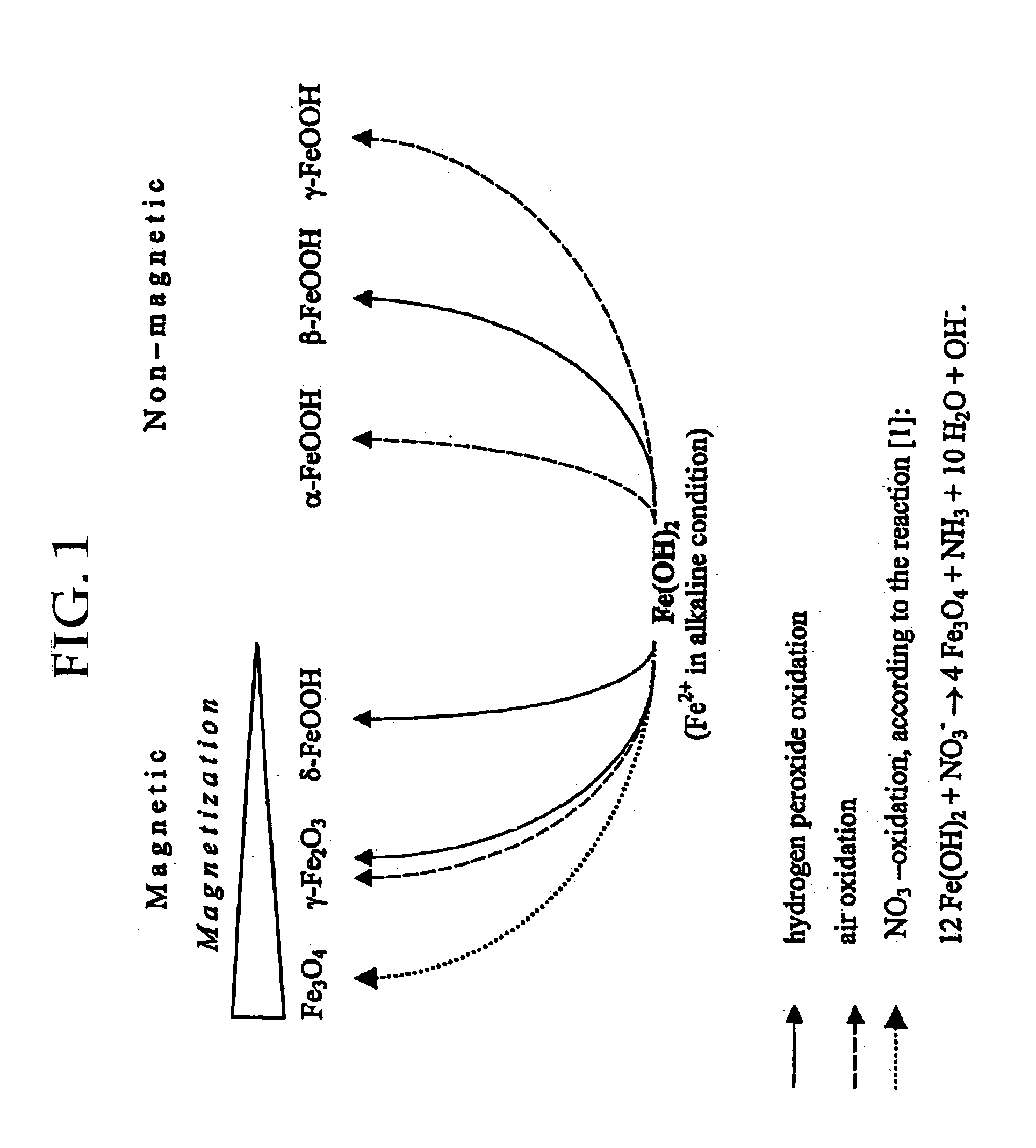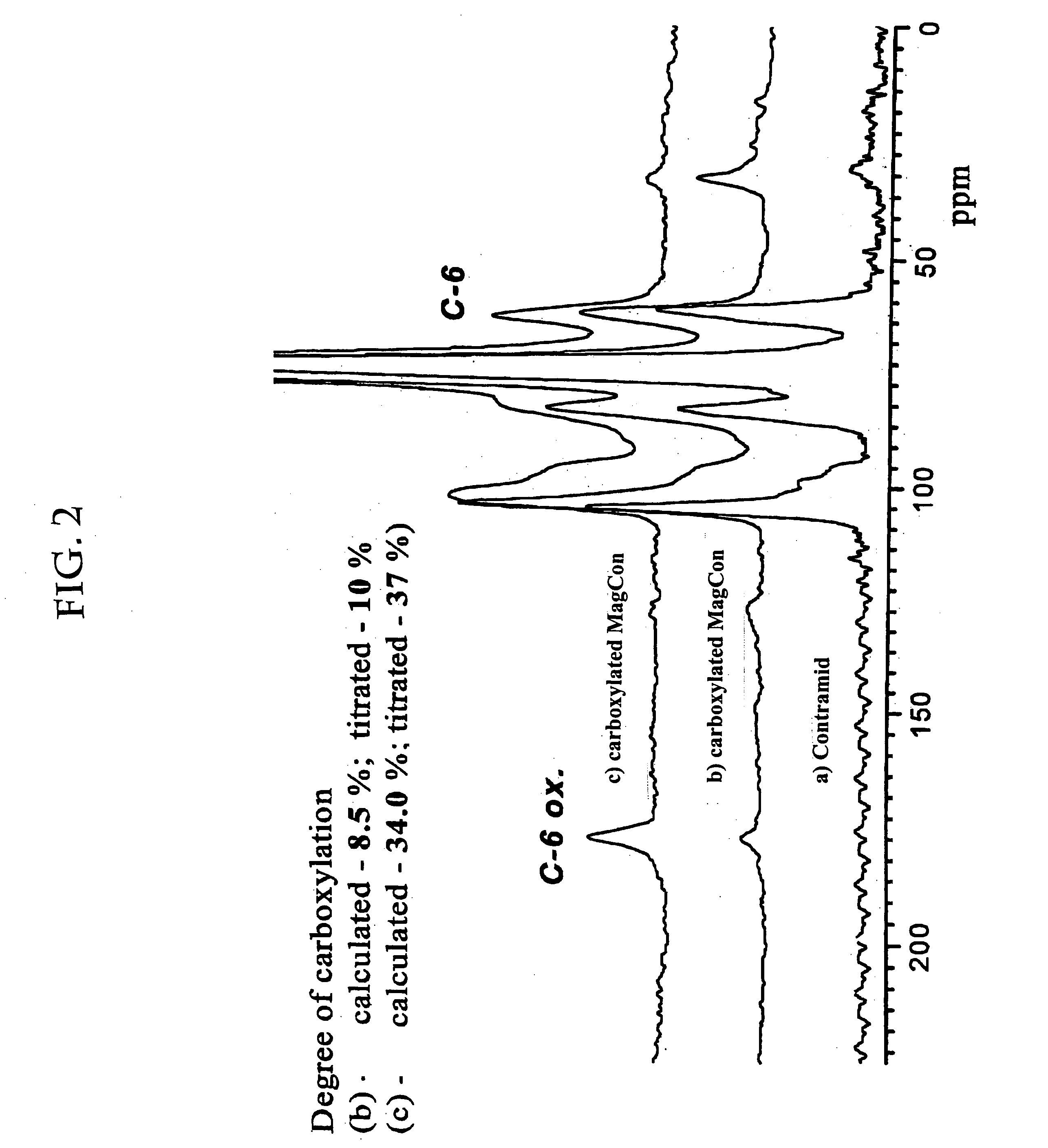Formation of superparamagnetic particles
a superparamagnetic particle and superparamagnetic iron technology, applied in the field of superparamagnetic iron particle preparation, can solve the problem of lack of functional groups for selective binding of biomolecules of interest, and achieve the effect of high conductivity and efficient removal
- Summary
- Abstract
- Description
- Claims
- Application Information
AI Technical Summary
Benefits of technology
Problems solved by technology
Method used
Image
Examples
example 1
In Situ Synthesis of Superparamagnetic Cross-Linked Starch Particles (MagCon) by the Nitrate Mediated Oxidation of Fe(II) Ions
A suspension of 5 g of Contramid® (a high amylose cross-linked starch) in 100 mL of fresh deionised water was added to 250 mL of an aqueous solution of 0.5 M FeCl2. The suspension was stirred under reduced pressure, thereby removing all gases from the suspension and also facilitating diffusion of Fe ions into the porous Contramid® matrix. After 30 minutes of stirring, the swollen beads of the Contramid®-Fe complex were separated by centrifugation and washed several times with deionised water. The resulting Contramid®-Fe particles were suspended in 250 mL of deionised water and 200 mL of 0.5 M NH4OH was added, turning the mixture dark green. Immediately after NH4OH addition, the mixture was placed into a water bath kept at 70-80° C. and 30 mL of 10% (w / w) KNO3 was added. The reaction mixture was stirred at this temperature for 60 minutes. Nitrate oxidizes F...
example 2
In Situ Formation of the Superparamagnetic Chitosan Particles (MagChi) by Nitrate-Mediated Oxidation of Iron (II) Ions
Chitosan (5 g) was dissolved in 100 mL of 0.1 M acetic acid to give a viscous chitosan solution. This solution was transferred into the flask containing 25 g of FeCl2 in 500 mL of water and the mixture obtained was stirred under reduced pressure for 30-50 minutes. After incubation, the chitosan-Fe complex was precipitated by the addition of 200 mL of 0.5 M NH4OH and the resultant dark-green gel was broken up by intense stirring and washing several times with deionised water. The resulting chitosan-Fe(OH)2 particles were resuspended in 200 mL of deionised water and 400 mL of 0.5 M NH4OH was added. Immediately after this, the mixture was placed into a water bath kept at 70-80° C. and 100 mL of 10% (w / w) KNO3 in water was added. The reaction mixture was stirred at this temperature for 60 to 90 minutes. After this time, the flask was removed from the water bath and th...
example 3
In Situ Synthesis of Superparamagnetic Sephadex Particles by the Nitrate Mediated Oxidation of Fe(II) Ions
A suspension of 5 g of Sephadex™ (epichlorohydrin cross-linked dextran beads, 20-40 μm in size) in 100 mL of fresh deionised water was added to 250 mL of an aqueous solution of 0.5 M FeCl2. The suspension was stirred under reduced pressure, thereby removing all gases from the suspension and also facilitating diffusion of Fe ions into the porous Sephadex matrix. After 30 minutes of stirring, the swollen beads of the Sephadex-Fe complex were separated by centrifugation and washed several times with deionised water. The resulting Sephadex-Fe particles were suspended in 250 mL of deionised water and 200 mL of 0.5 M NH4OH was added. Immediately after NH4OH addition, the mixture was placed into a water bath kept at 70-80° C. and 30 mL of 10% (w / w) KNO3 was added. The reaction mixture was stirred at this temperature for 80 minutes. After this time, the flask was removed from the wat...
PUM
| Property | Measurement | Unit |
|---|---|---|
| temperature | aaaaa | aaaaa |
| mole percentage | aaaaa | aaaaa |
| concentrations | aaaaa | aaaaa |
Abstract
Description
Claims
Application Information
 Login to View More
Login to View More - R&D
- Intellectual Property
- Life Sciences
- Materials
- Tech Scout
- Unparalleled Data Quality
- Higher Quality Content
- 60% Fewer Hallucinations
Browse by: Latest US Patents, China's latest patents, Technical Efficacy Thesaurus, Application Domain, Technology Topic, Popular Technical Reports.
© 2025 PatSnap. All rights reserved.Legal|Privacy policy|Modern Slavery Act Transparency Statement|Sitemap|About US| Contact US: help@patsnap.com



